Vietnam, a small S-shaped country, embodies a strong patriotic spirit and a glorious historical tradition. Throughout thousands of years of nation-building and defense, the remaining historical sites stand as vivid proof of the nation’s heroic past. From ancient temples to resounding battlefields, each location holds valuable stories and lessons.
If you want to learn about famous historical sites imbued with Vietnamese cultural identity, let’s explore the list below. We will journey back in time, return to our roots, and gain a deeper understanding of our nation’s glorious history.
Hung Temple – Phu Tho: Returning to the Origin of the Nation
“Whether you travel upstream or downstream, remember the Hung Kings Commemoration Day on the 10th of the third lunar month.” This familiar folk verse has become a sacred reminder for every Vietnamese person. No matter where they are or what they do, on the 10th day of the third lunar month, descendants of Lac Hong turn towards Hung Temple in Phu Tho to commemorate the merits of the Hung Kings, who founded the nation.

The Hung Temple complex, located on Nghia Linh Mountain, includes numerous temples and pagodas built from the Dinh Tien Hoang dynasty and completed in the Later Le dynasty. The Hung Temple Festival is not only an occasion to commemorate the Hung Kings but also an opportunity for every Vietnamese person to recall the tradition of “drinking water, remembering the source,” affirming the national cultural identity.
Hoan Kiem Lake – Hanoi: Historical Witness in the Heart of the Capital
Hoan Kiem Lake, also known as Guom Lake, is the heart of Hanoi, the symbol of a land with a thousand years of civilization. The green lake reflects the ancient Turtle Tower, the vermilion The Huc Bridge, and rows of ancient trees providing shade. Hoan Kiem Lake is associated with the legend of King Le Loi returning the magic sword to the Golden Turtle, a story imbued with mythical elements and patriotism.

Surrounding Hoan Kiem Lake is a bustling pedestrian street, where locals and tourists can stroll, enjoy the scenery, and participate in cultural and artistic activities. Near Hoan Kiem Lake are also the Old Quarter, St. Joseph’s Cathedral, and many other attractive tourist destinations. Hoan Kiem Lake is not only a historical site but also a cultural space, preserving the spiritual values of Hanoians.
Hoa Lu Ancient Capital – Ninh Binh: The First Capital of Vietnam
Hoa Lu Ancient Capital is a particularly important national historical relic complex, located in Ninh Binh province. This place was once the capital of Dai Co Viet under the Dinh, Tien Le, and early Ly dynasties. Hoa Lu is surrounded by majestic mountains and the winding Hoang Long River, creating a strategic and impregnable position.
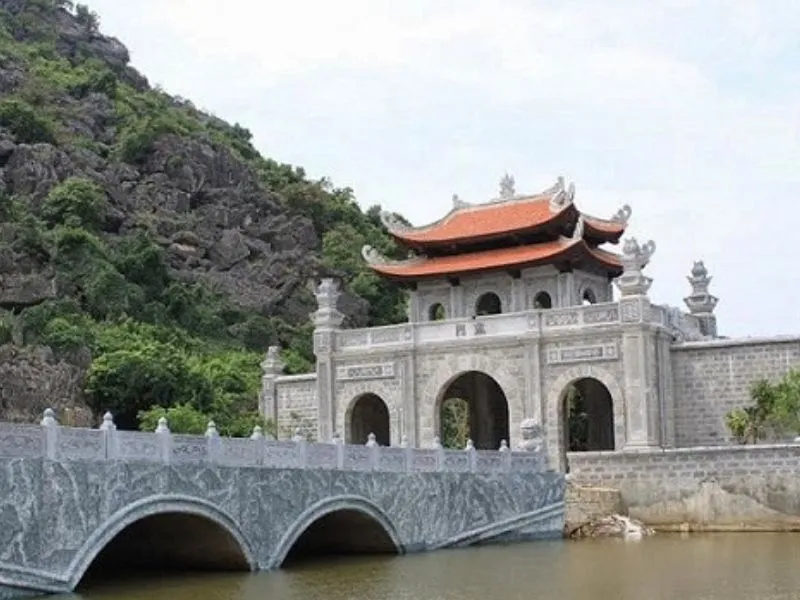
Visiting Hoa Lu, tourists will admire ancient architectural works such as the temples of King Dinh Tien Hoang and King Le Dai Hanh, and discover the heroic historical stories of the nation. Hoa Lu is not only a historical site but also an attractive cultural and spiritual tourist destination, attracting a large number of domestic and international tourists.
Co Loa Citadel – Dong Anh: Testimony to the Au Lac Civilization
Co Loa Citadel, located in Dong Anh district, Hanoi, is one of the oldest citadels in Vietnam. It was built in the 3rd century BC under King An Duong Vuong, the capital of Au Lac. The unique spiral structure of the citadel with three concentric walls has led to it being called Co Loa (Spiral Citadel).
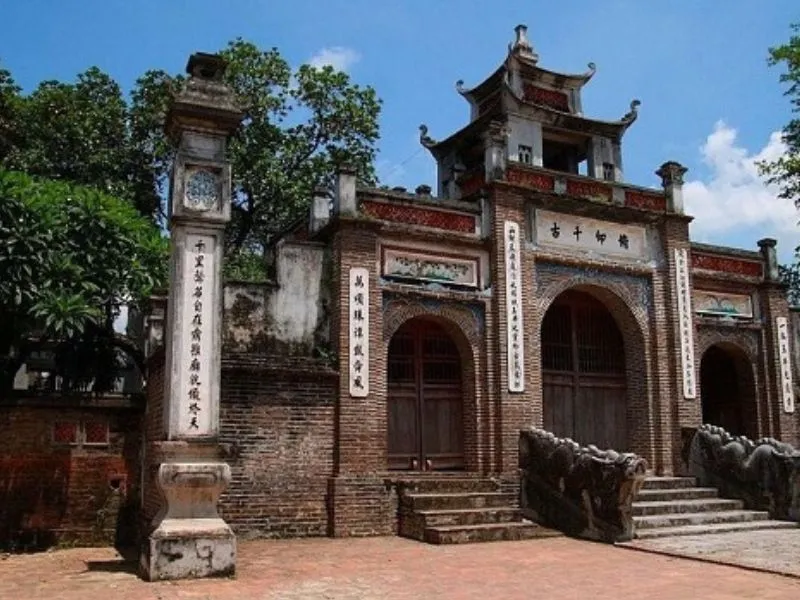
Co Loa Citadel was not only a military structure but also the political, economic, and cultural center of Au Lac. This place is associated with the legend of My Chau – Trong Thuy, a tragic love story but also a profound lesson about patriotism and vigilance. Annually, the Co Loa Festival is held on the 6th day of the first lunar month, attracting many people and tourists from all over.
Dien Bien Phu – Dien Bien: Heroic Epic Resounding in the Mountains
Dien Bien Phu is a valley located in Dien Bien province, Northwest Vietnam. This place went down in history with the Dien Bien Phu victory in 1954, a resounding victory that ended French colonial rule and opened a new era for the Vietnamese nation.
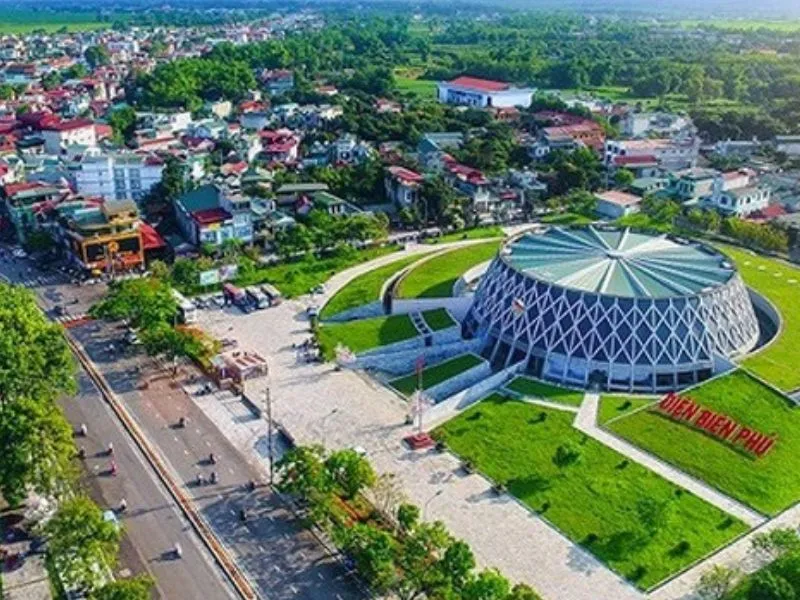
Today, Dien Bien Phu has become a special national historical site, a destination for those who want to learn about history and commemorate the merits of heroic martyrs. Visiting Dien Bien Phu, tourists can visit relics such as Hill A1, De Castries bunker, the Dien Bien Phu Victory Monument, and the Dien Bien Phu Museum. The Dien Bien Phu victory remains the pride of the Vietnamese nation, a symbol of patriotism and indomitable will.
Dong Nhan Temple – Hanoi: Place of Worship for the Trung Sisters
Dong Nhan Temple, located in Hai Ba Trung district, Hanoi, is a place of worship for the two national heroines Trung Trac and Trung Nhi. The Trung Sisters led an uprising to expel the Eastern Han invaders, regaining independence for the country in 40 AD.
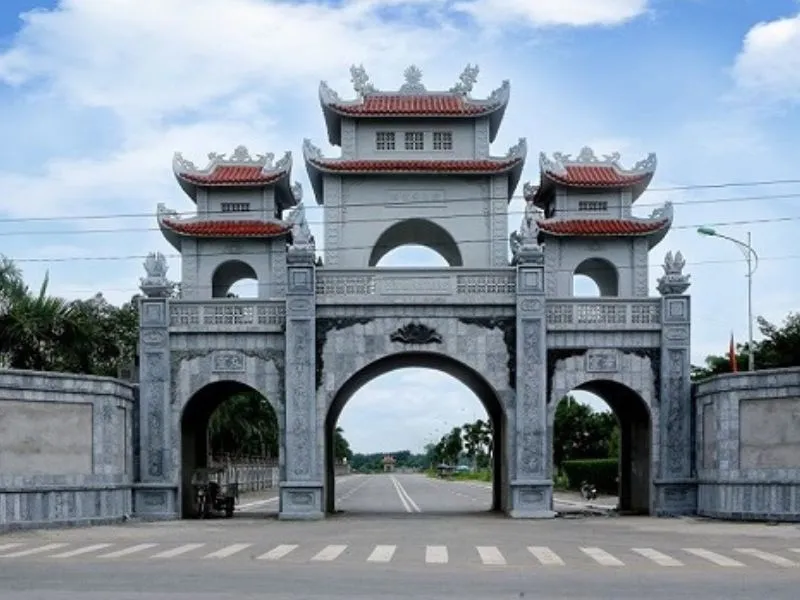
Dong Nhan Temple is an ancient architectural work, deeply imbued with Vietnamese cultural identity. Annually, on the 6th day of the second lunar month, the Dong Nhan Temple Festival is held to commemorate the merits of the Trung Sisters and honor the patriotic and indomitable spirit of Vietnamese women.
Temple of Literature – Quoc Tu Giam – Hanoi: Vietnam’s First University
The Temple of Literature – Quoc Tu Giam is a complex of historical and cultural relics located in the center of Hanoi. The Temple of Literature was built in 1070 during the reign of King Ly Thanh Tong to worship Confucius and sages. Quoc Tu Giam was established in 1076, the first university in Vietnam, training thousands of talents for the country.
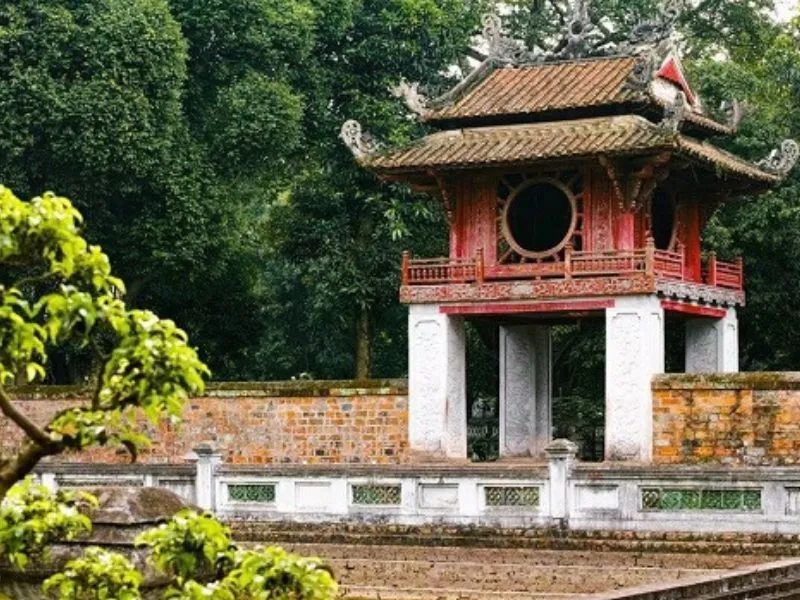
The Temple of Literature – Quoc Tu Giam is not only a historical site but also a symbol of Vietnamese civilization. It preserves 82 Doctor Steles, listing the names of those who passed the imperial examinations under the Le-Mac dynasties. The Temple of Literature – Quoc Tu Giam is a destination for many students and tourists who want to learn about Vietnamese educational history and culture.
Complex of Hue Monuments – Hue: World Cultural Heritage
The Complex of Hue Monuments is a UNESCO World Heritage Site, including the Citadel of Hue, the Imperial City of Hue, the Forbidden Purple City of Hue, and the tombs of the Nguyen emperors. Hue was the political, economic, and cultural center of Vietnam from the early 19th century to the mid-20th century.
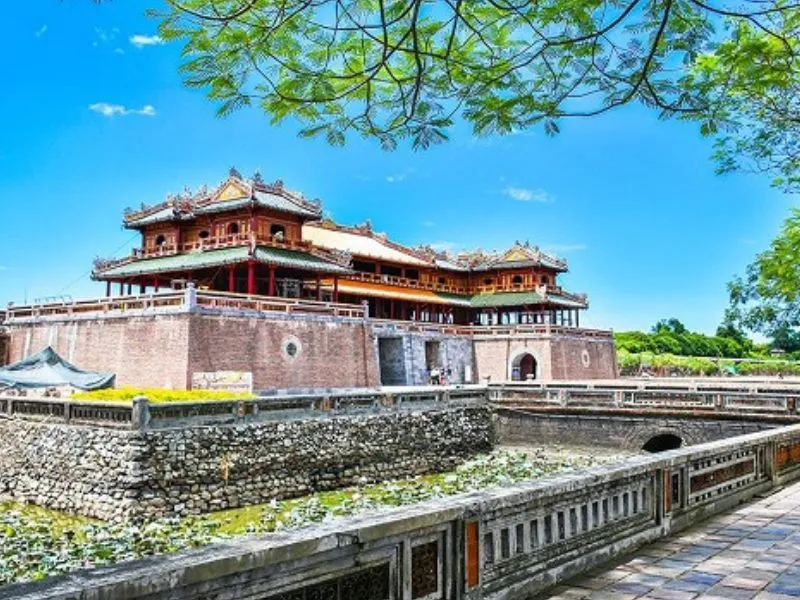
The Complex of Hue Monuments is a massive architectural work, deeply imbued with Vietnamese royal architectural style. Visiting Hue, tourists will admire the ancient beauty of the Citadel, explore the majestic splendor of the Imperial City and the Forbidden Purple City, and learn about the lives and careers of the Nguyen emperors. Hue is not only a historical site but also an attractive cultural tourist destination, attracting a large number of domestic and international tourists.
Ho Citadel – Thanh Hoa: Masterpiece of Stone Architecture
Ho Citadel, also known as Tay Do Citadel, located in Thanh Hoa province, was built in 1397 under King Ho Quy Ly. The citadel is built entirely of stone, with large stone blocks stacked skillfully without any binding agents.
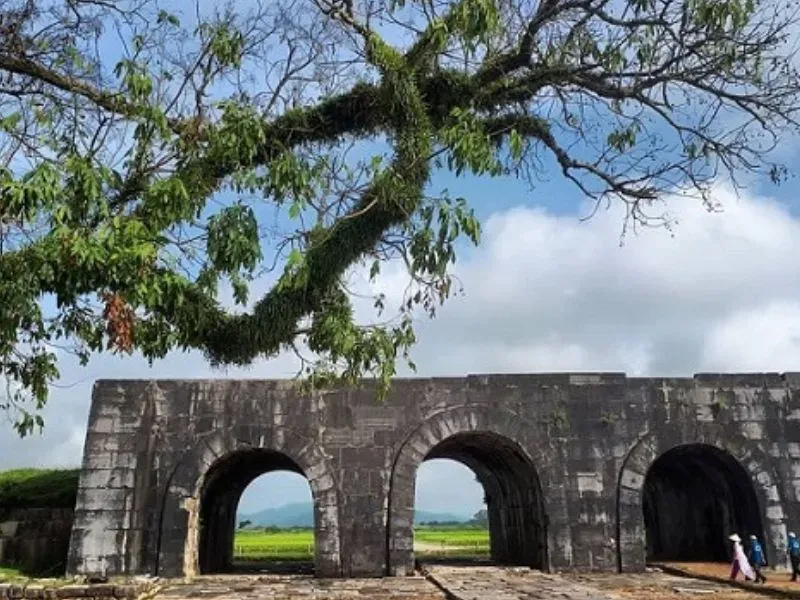
Ho Citadel is a unique architectural work, demonstrating the high level of construction techniques of ancient Vietnamese people. Despite having gone through more than 6 centuries, Ho Citadel is still relatively intact and is recognized by UNESCO as a World Heritage Site.
Ngoc Son Temple – Hanoi: Jewel in the Heart of Hoan Kiem Lake
Ngoc Son Temple, located on Jade Island in the middle of Hoan Kiem Lake, is one of the most famous temples in Hanoi. The temple worships Van Xuong De Quan, Quan Van Truong, and Tran Hung Dao. It was built in the 19th century, on the foundation of an ancient shrine.
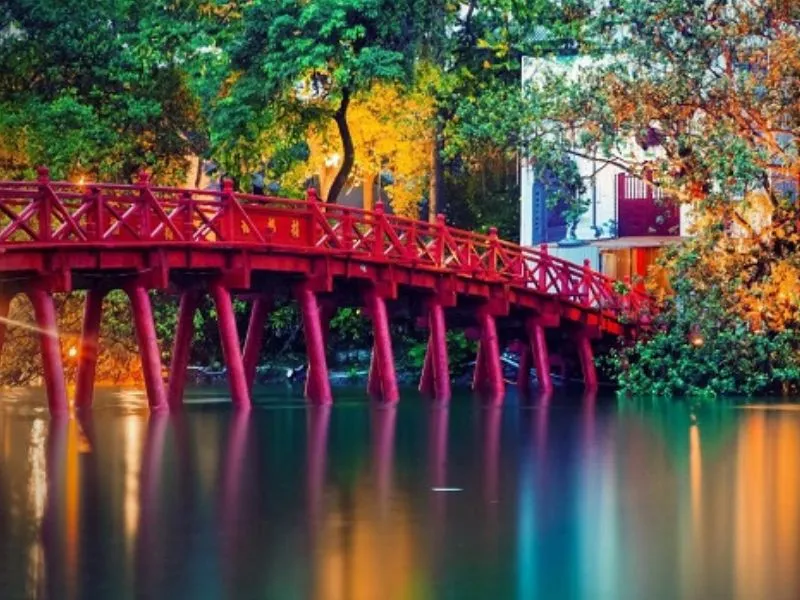
Ngoc Son Temple is a harmonious architectural work, combining temple, pagoda, and folk architecture. The Huc Bridge, with its bright red paint, is a prominent highlight of Ngoc Son Temple. Ngoc Son Temple is a spiritual destination for Hanoians and tourists who want to pray for luck, peace, and success.
Independence Palace – Ho Chi Minh City: Historical Witness of Reunification Day
Independence Palace, also known as Reunification Palace, is located in the center of Ho Chi Minh City. This place was once the residence and workplace of the President of the Republic of Vietnam. Independence Palace is associated with the historical event of April 30, 1975, when tanks of the South Vietnam Liberation Army entered, marking the collapse of the Republic of Vietnam regime and national reunification.
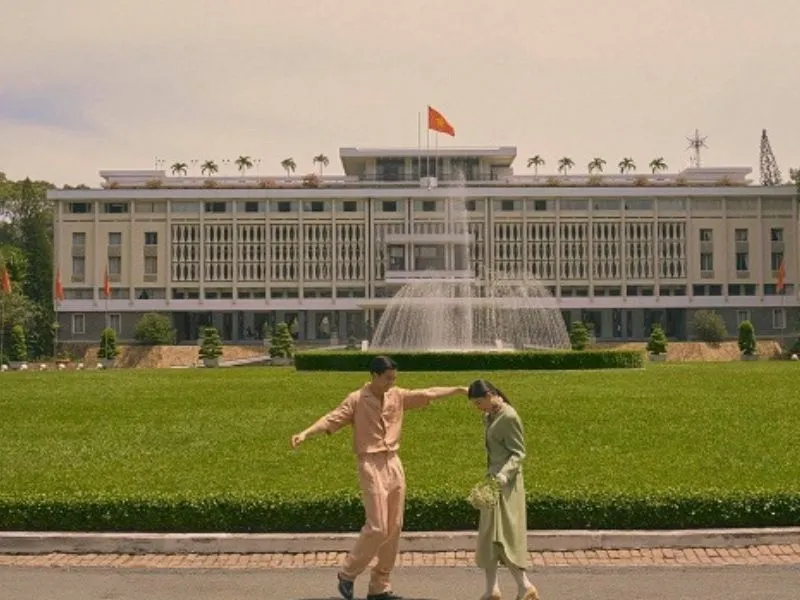
Today, Independence Palace is a special national historical site, an attractive tourist destination in Ho Chi Minh City. Visiting Independence Palace, tourists will learn about Vietnamese history during the war period and witness valuable historical artifacts and documents.
Truc Lam Yen Tu Zen Monastery – Quang Ninh: Cradle of Truc Lam Zen Buddhism
Truc Lam Yen Tu Zen Monastery, located on Yen Tu Mountain, Quang Ninh province, is one of the largest Buddhist centers in Vietnam. This place is considered the cradle of Truc Lam Zen Buddhism, a Zen sect deeply rooted in Vietnamese identity.
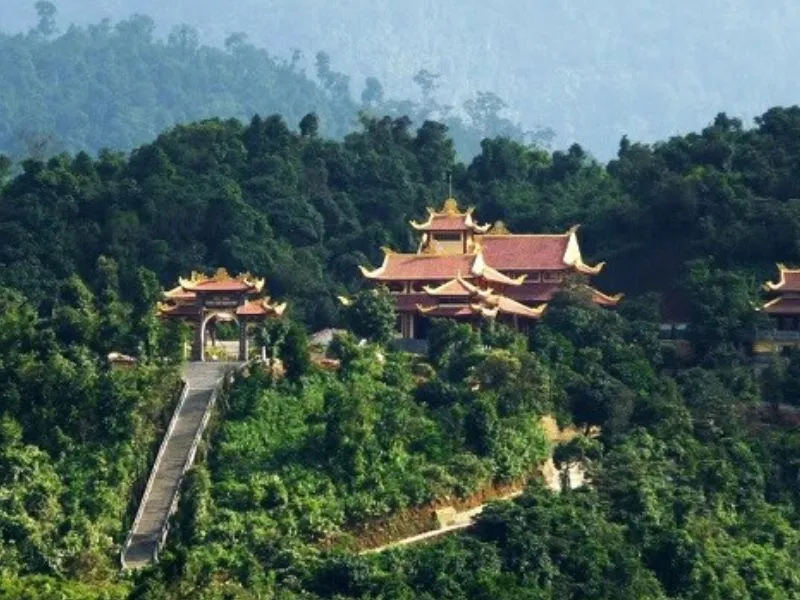
Truc Lam Yen Tu Zen Monastery is a massive architectural complex, including many temples, pagodas, shrines, and towers. Visiting Yen Tu, tourists can climb mountains, enjoy the scenery, worship Buddha, and learn about Vietnamese Buddhist history and culture. Yen Tu is a spiritual destination for many people who want to seek purity and peace in their souls.
Conclusion
Vietnam is a country rich in historical and cultural traditions. Historical sites stretching across the country are proof of the arduous but glorious process of nation-building and defense. Exploring and learning about these sites not only helps us better understand history but also awakens national pride and a sense of responsibility in preserving and promoting traditional cultural values. Take the time to explore these historical sites and deeply feel the beauty and value of Vietnam.